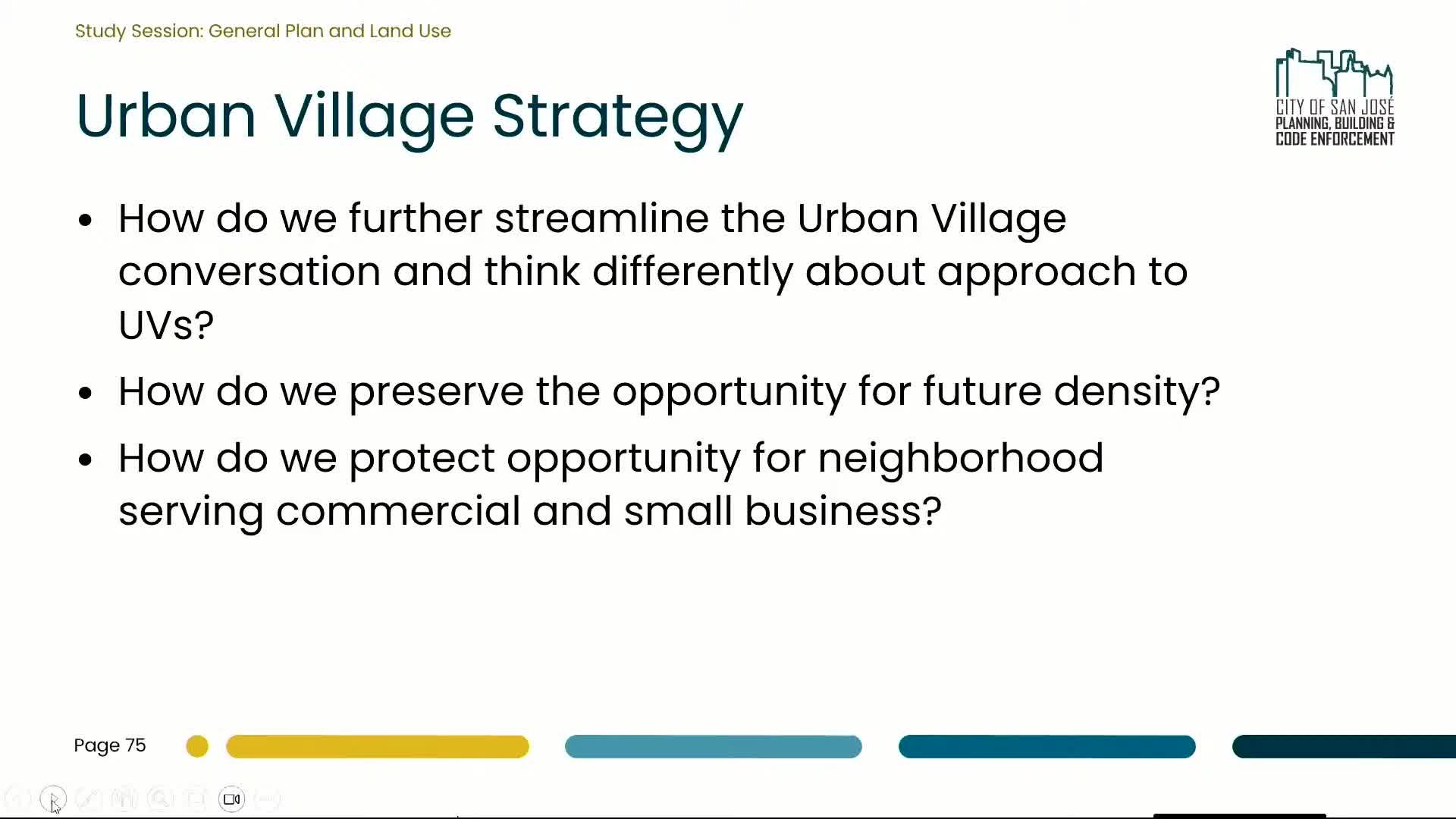City Officials Discuss Balancing Urban Development and Housing Density Challenges
September 19, 2025 | San Jose , Santa Clara County, California
This article was created by AI summarizing key points discussed. AI makes mistakes, so for full details and context, please refer to the video of the full meeting. Please report any errors so we can fix them. Report an error »

In a recent San Jose City Council study session, officials engaged in a comprehensive discussion regarding the city's General Plan and land use strategies, emphasizing the need for creative solutions to address housing and economic challenges. The meeting highlighted the delicate balance the city must maintain between increasing housing density and preserving economic land, a topic that has become increasingly pressing as the region faces rising housing demands.
City officials acknowledged the difficulties small businesses encounter when trying to adapt existing spaces, often referred to as "cold shells," which can deter new tenants from moving in. This situation underscores the necessity for innovative approaches to land use that can accommodate future growth while ensuring that local businesses remain viable.
A significant point of discussion was the ratio of jobs to employed residents, with council members expressing a nuanced understanding of its implications. While some members noted that increasing housing density should not be viewed negatively, there was a consensus that eliminating employment land could have detrimental long-term effects. The council emphasized the importance of maximizing the value of existing economic lands to support a balanced community.
The concept of "gentle densification" was also a focal point, as officials recognized that the ambitious goal of achieving 100% growth within a limited land area has not materialized as expected. State laws have shifted the landscape, prompting the city to adapt its strategies. The council pointed to the success of accessory dwelling units (ADUs) as a model for creating additional housing without the need for new land, showcasing San Jose's leadership in this area.
Moreover, the council discussed the potential for redeveloping underutilized school and religious lands, which could provide opportunities for housing while avoiding the pitfalls of converting all such properties into low-density developments. The challenge lies in finding the right balance between redevelopment and preserving essential community resources.
As the meeting concluded, city officials acknowledged the complexity of these issues and the need for ongoing study and dialogue. The decisions made in this planning process are expected to have lasting impacts, shaping the community's landscape well into the future. The council's commitment to addressing these challenges reflects a proactive approach to urban planning, aiming to create a sustainable and vibrant San Jose for years to come.
City officials acknowledged the difficulties small businesses encounter when trying to adapt existing spaces, often referred to as "cold shells," which can deter new tenants from moving in. This situation underscores the necessity for innovative approaches to land use that can accommodate future growth while ensuring that local businesses remain viable.
A significant point of discussion was the ratio of jobs to employed residents, with council members expressing a nuanced understanding of its implications. While some members noted that increasing housing density should not be viewed negatively, there was a consensus that eliminating employment land could have detrimental long-term effects. The council emphasized the importance of maximizing the value of existing economic lands to support a balanced community.
The concept of "gentle densification" was also a focal point, as officials recognized that the ambitious goal of achieving 100% growth within a limited land area has not materialized as expected. State laws have shifted the landscape, prompting the city to adapt its strategies. The council pointed to the success of accessory dwelling units (ADUs) as a model for creating additional housing without the need for new land, showcasing San Jose's leadership in this area.
Moreover, the council discussed the potential for redeveloping underutilized school and religious lands, which could provide opportunities for housing while avoiding the pitfalls of converting all such properties into low-density developments. The challenge lies in finding the right balance between redevelopment and preserving essential community resources.
As the meeting concluded, city officials acknowledged the complexity of these issues and the need for ongoing study and dialogue. The decisions made in this planning process are expected to have lasting impacts, shaping the community's landscape well into the future. The council's commitment to addressing these challenges reflects a proactive approach to urban planning, aiming to create a sustainable and vibrant San Jose for years to come.
View full meeting
This article is based on a recent meeting—watch the full video and explore the complete transcript for deeper insights into the discussion.
View full meeting
